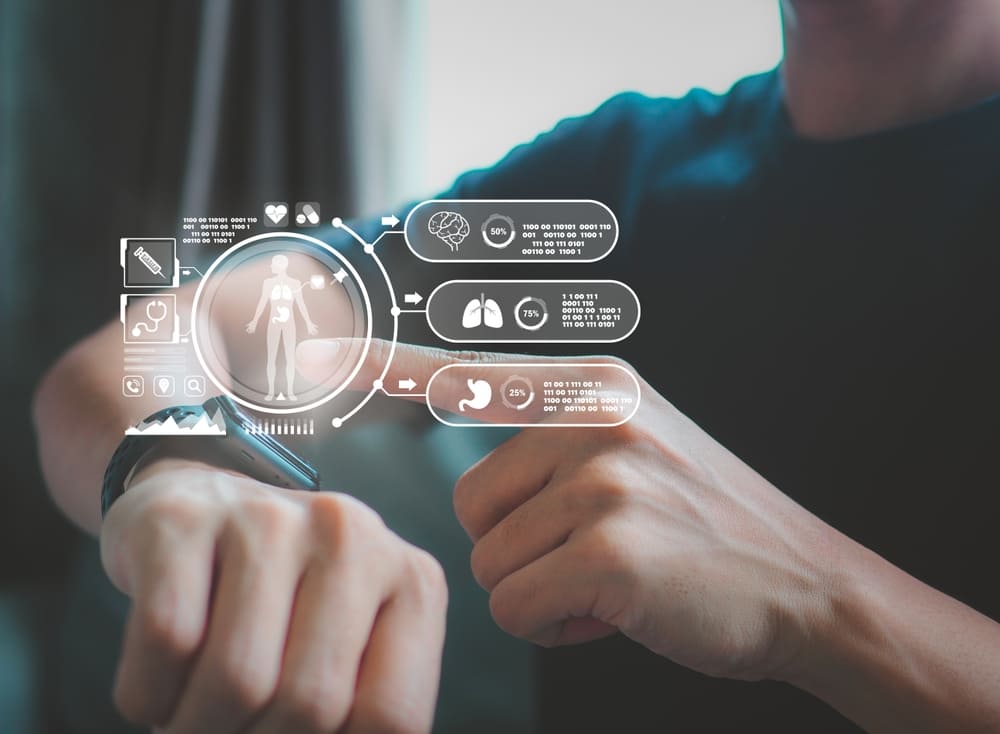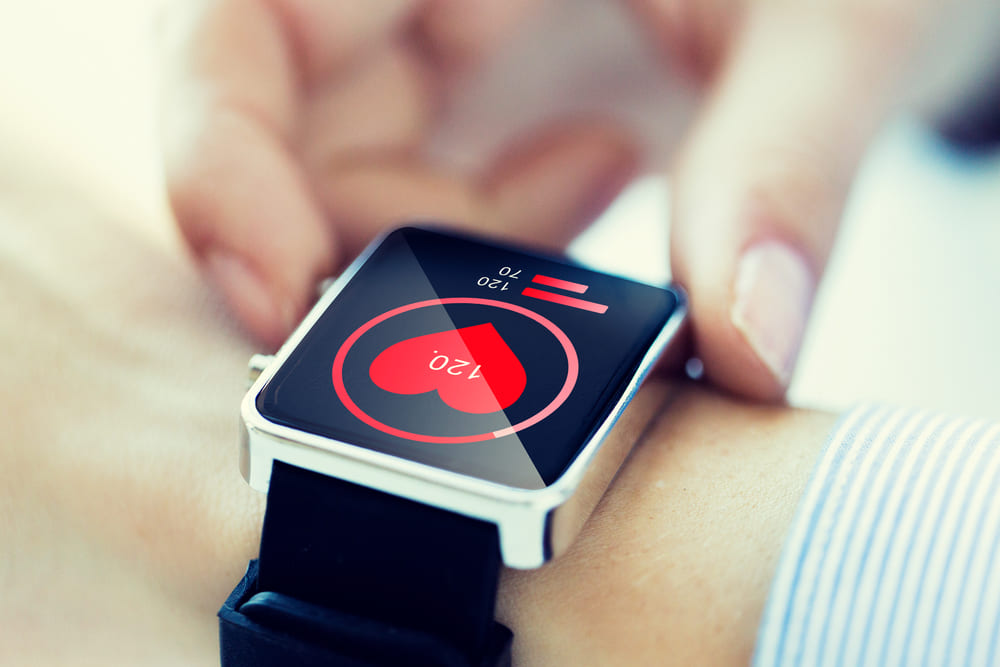We live today in a fast-paced world where heart health has never been more important. You’re undoubtedly asking yourself: “With heart care gaining so much attention worldwide, how can wearable technologies help me stay healthier?”
Wearable technology is quite simply devices we can wear on our bodies (ranging from smartwatches to fitness trackers). Many of these are not just gadgets for tracking walking steps or calories – they have grown into sophisticated health monitors capable of providing real-time insights into our cardiovascular condition.
Each year brings new products to the market, more advanced than before – and the public eagerly anticipates new releases and advancements.
In 2024, as we plan the months ahead, let’s see what these innovations are doing to help us now, what’s breaking ground in this world of medical support, and how it can all benefit us.
“I’d love to know … how are people like me using wearables for better heart health?”
We’ve come a long way since these exciting options first came into our lives.
According to Andrew Hughes et al., writing in Circulation Research, today’s wearables, including smartwatches and fitness bands, are equipped to help the heart via sophisticated sensors capable of accurately tracking heart rate. These continuously monitor heart rate, alerting users to any abnormality that might indicate a potential health issue.
Moreover, the integration of electrocardiogram (ECG) capabilities in some wearables has been a groundbreaking development. This feature allows users to perform a basic ECG test, detecting irregular heart rhythms like atrial fibrillation, which can be critical in preventing heart-related incidents.
Additionally, some now offer blood oxygen saturation monitoring, stress tracking, and sleep quality analysis, all of which contribute to a comprehensive understanding of heart health.
This current state of the science reflects a significant shift toward a more all-rounded approach to personal health monitoring, thus helping the heart in many ways.
“I’d like to keep up … what are the latest healthcare advances in wearables these days?”
Tech experts have now progressed far beyond the basic metrics.
One of the most notable developments is the improvement in sensor accuracy, enabling these trackers to check heart rate variability (HRV) with greater precision. According to Marco Altini, writing in Medium, HRV is a measure of the variation in time between heartbeats and is crucial for understanding stress and recovery levels, directly impacting heart health.
Additionally, the integration of artificial intelligence (AI) has led to more personalized health insights. AI algorithms analyze data patterns over time, providing tailored recommendations for lifestyle changes that can improve heart health.
Another leap forward is the ability to detect early signs of serious conditions like atrial fibrillation more reliably.
These advancements, coupled with enhanced battery life and user interfaces, make it all convenient besides giving us powerful heart health management tools.

“I’m curious about it … how can the new innovations in wearables help me?”
The New Year may herald some further breakthroughs.
As we look ahead to the upcoming advancements, let’s explore some of the key features and innovations that are expected to make a significant impact on heart health monitoring:
- Advanced ECG Monitoring: Products on the anvil are expected to offer more sophisticated electrocardiogram capabilities, capable of detecting a broader range of arrhythmias with higher accuracy, significantly enhancing the early detection of potential heart conditions.
- Continuous Blood Pressure Monitoring: Innovators are looking to incorporate the much-anticipated feature of continuous blood pressure tracking, providing users with more comprehensive data on their cardiovascular health throughout the day.
- Enhanced Heart Rate Variability Analysis: Leveraging improved sensor accuracy will probably allow a more detailed analysis of heart rate variability, offering insights into stress levels affecting heart health.
- Bioimpedance Sensors for Comprehensive Health Data: According to Willemijn Groenendaal et al., writing in JMIR Biomedical Engineering, the next-generation range is expected to include bioimpedance sensors that can assess body composition and hydration levels, thus offering a more holistic view of the heart.
- Personalized Stress Management Systems: Heart rate variability data will also likely be supported by next-generation systems to help manage stress, providing personalized recommendations for relaxation and mental wellness.
- Innovative Blood Oxygen Monitoring: According to Yihang Jiang et al., writing in PLOS Digital Health, improved SpO2 (smartwatch pulse oximetry monitoring) is anticipated, offering more precise readings of blood oxygen levels, which is crucial for understanding cardiovascular and respiratory health.
“I’m keen to understand … how can I benefit from wearable technology like others?”
People seem to have gained a lot from personalized information.
According to Carol Maher et al., writing in BMC Public Health, here are some feedback points gathered from wearable users.
- Users have become more heart-aware. The constant monitoring of the various heart parameters has educated people about the nuances of heart functions.
- The ability to track activities and receive personalized fitness recommendations has encouraged users to adopt healthier lifestyles, indirectly benefiting their heart health.
- Users are also appreciating the convenience of receiving instant notifications for irregular heart rhythms, prompting timely medical consultations.
- The sleep, diet, and activity tracking feature has been another highlight, with many users aiming for improvements in their comprehensive well-being.

“I am wondering … surely wearable technology must have some challenges I should be aware of?”
Of course, ever new development has its its own issues to fine-tune.
According to Vijayananda Vignesha, writing in LinkedIn, it’s essential to acknowledge the challenges and limitations that both users and developers face:
- Data Accuracy Concerns: The precision of health metrics like ECG readings and blood pressure monitoring could often fall short of medical-grade equipment, potentially leading to data misinterpretation.
- Algorithmic Generalization: A standard algorithmic approach may not account for individual physiological variations, and may impact the accuracy and relevance of health insights.
- Battery Life Limitations: An increase in features demands more power, resulting in shorter battery life and the need for frequent charging.
- Data Privacy and Security Issues: The collection of sensitive health information raises concerns about data privacy and security, necessitating robust protective measures.
- Cost Accessibility: The high cost of new versions can make them inaccessible to a broader population, limiting their reach and impact on public health.
- Limited Health Metrics: If only a limited range of health metrics is available. People may miss out on comprehensive health monitoring and analysis.
“I’d like to get started … can I be more proactive about heart care with wearable technology?”
The good news is that technologists are going beyond the heart to monitor other ailments.
This is an excellent trend because when people have chronic conditions such as such as obesity, cholesterol, diabetes, and hypertension – along with other hereditary factors – it can all have a multiplicative impact on their heart.
Consistent and frequent checkups to monitor these conditions are the best way to mitigate these risks. People can get alerted regarding doctor appointments for their total health.
By receiving tangible data and insights, individuals can get motivated and empowered to make informed and timely decisions about getting their doctors’ help. This can enable proactive lifestyle modifications and better heart management.
You know it in your heart
With each advancement in wearable technology, these devices can become more integral to your daily life, offering a blend of convenience and comprehensive health monitoring. They can help educate all of us about heart health, leading to a more health-conscious society.
As we step into a future where technology and health are increasingly intertwined, the message is clear: Stay heart-healthy.
References
- Hughes, Andrew, et al. Circulation Research. Accessed: December 24, 2023. https://www.ahajournals.org/doi/abs/10.1161/CIRCRESAHA.122.322389
- Altini, Marco. Medium. “Wearables for Heart Rate Variability (HRV) Measurement: Analysis of Data Quality and Issues with Data Interpretation.” Accessed: December 24, 2023. https://medium.com/@altini_marco/wearables-for-heart-rate-variability-hrv-measurement-analysis-of-data-quality-and-issues-with-a50ae8127a8b
- Groenendaal, Willemijn, et al. JMIR Biomedical Engineering. “Wearable Bioimpedance Monitoring: Viewpoint for Application in Chronic Conditions.” Accessed: December 24, 2023. https://biomedeng.jmir.org/2021/2/e22911
- Jiang, Yihang, et al. PLOS Digital Health. “Investigating the accuracy of blood oxygen saturation measurements in common consumer smartwatches.” Accessed: December 24, 2023. https://www.ncbi.nlm.nih.gov/pmc/articles/PMC10337940/
- Maher, Carol, et al. BMC Public Health. “Users’ experiences of wearable activity trackers: a cross-sectional study.” Accessed: December 24, 2023. https://pubmed.ncbi.nlm.nih.gov/29141607/
- Vignesha, Vijayananda. LinkedIn. “Wearable Technology and its Current Limitations” Accessed: December 24, 2023. https://www.linkedin.com/pulse/wearable-technology-its-current-limitations-vijayananda-vignesha/




